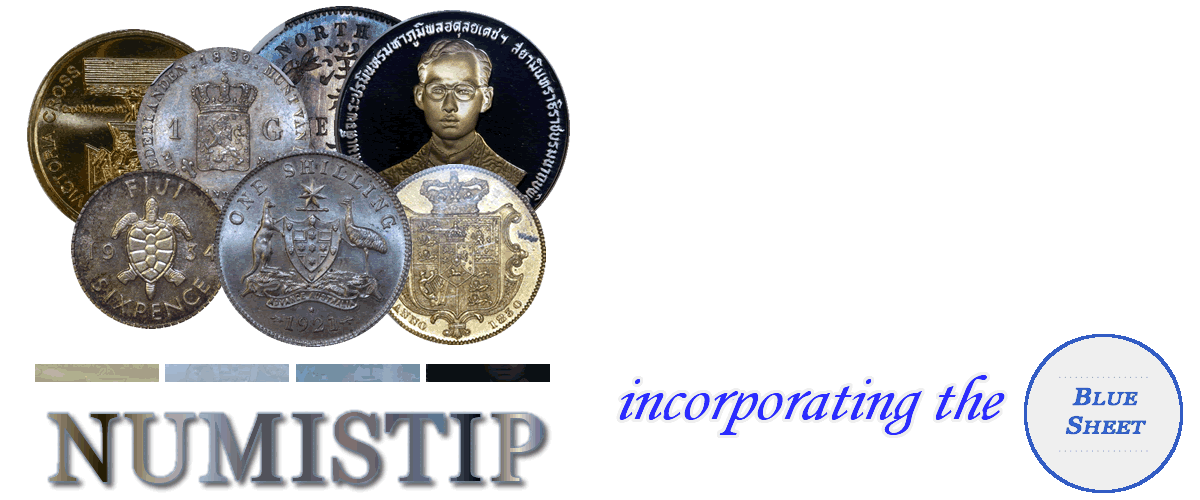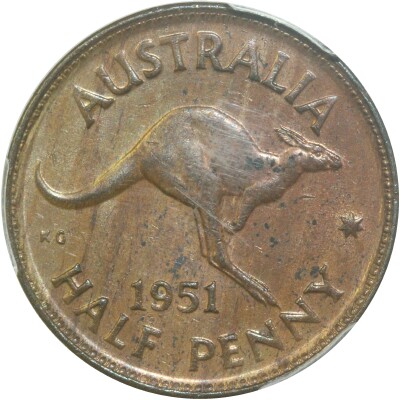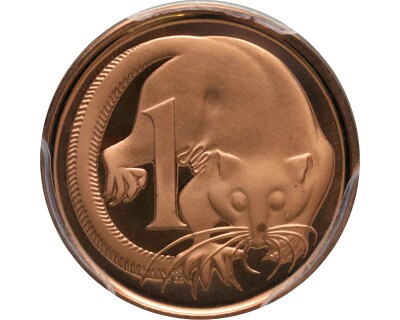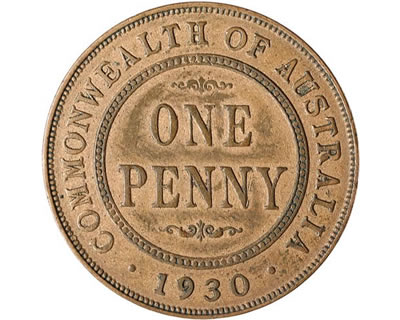



? In 1951 the Perth and Melbourne Mints produced 29,422,000 Half Penny pieces. In the same year the Royal Mint in London produced 6,960,000 pennies. The London variety can be distinguished by a 'PL' mint-mark and the Perth Mint variety can be be distinguished by a dot mint-mark located in the same spot. The Melbourne variety is notably more scarce than the Perth variety although it is still quite affordable until around MS64. London 'PL' mint-mark on the reverse of a 1951-PL ...

? The Bicentenary dodecagonal fifty cent coin was issued in 1988 to commemorate 200 years since the arrival of the First Fleet in New South Wales. In 1988 there was much celebration and a number of coins and medallions were issued to pay tribute to 200 years of European settlement in Australia. One example is this commemorative fifty cent coin, which was issued by the Royal Australian Mint, Canberra to mark the day that First Fleet arrived in New south Wales - January 26th 1788. The reverse ...

? The 1924 is one of the key dates of the half penny series due in part to its low initial mintage of 681,600. While in lower grades the coin can be readily obtained and still occasionally found in virgin hoards, in mint state it is very rare with probably fewer than 50 examples available. The type is typically well struck up with 8 pearls visible even at the AU50 level and occasionally down in the XF40-45 level, a testament to the maturing half penny production line at the Melbourne mint, ...

? In 1915 the Heaton mint struck the last half pennies they would produce for Australia during the reign of King George V signified by the H mintmark beneath the lower scroll on the reverse, as with the 1912-H and the 1914-H half pennies. The 1915-H is by far the scarcest half penny, short of the 1923, largely owing to the low initial mintage of only 720,000 pieces. In mint state the 1915-H is also very scarce but the 1924 is probably slightly scarcer with at least two examples ...

? 1922 was the first year in which the Perth mint assisted en masse in the production of Australian copper coins. This was due to the strong demand for circulating currency, in particular the lower denominations brought about by the roaring twenties. The Melbourne mint produced a total of 9,529,440 pennies while the Perth mint produced 3,626,400 from November 1921 to February 1923 . Of these, 208,800 were struck prior to the receipt of 1922 dies and can be assumed to ...








